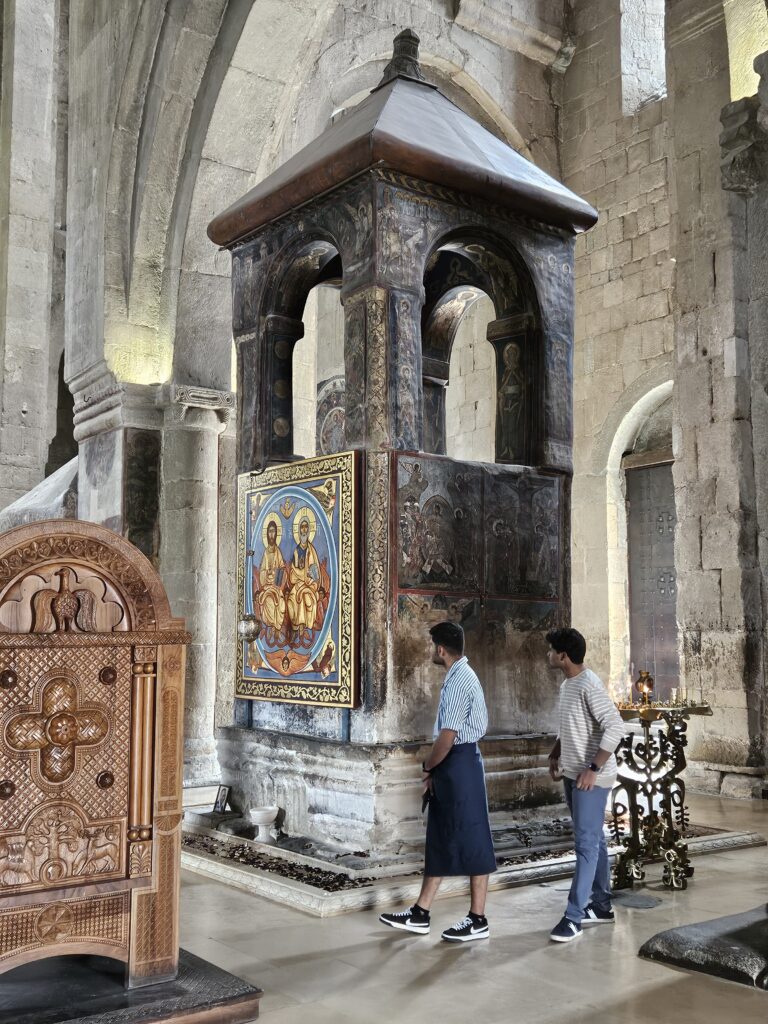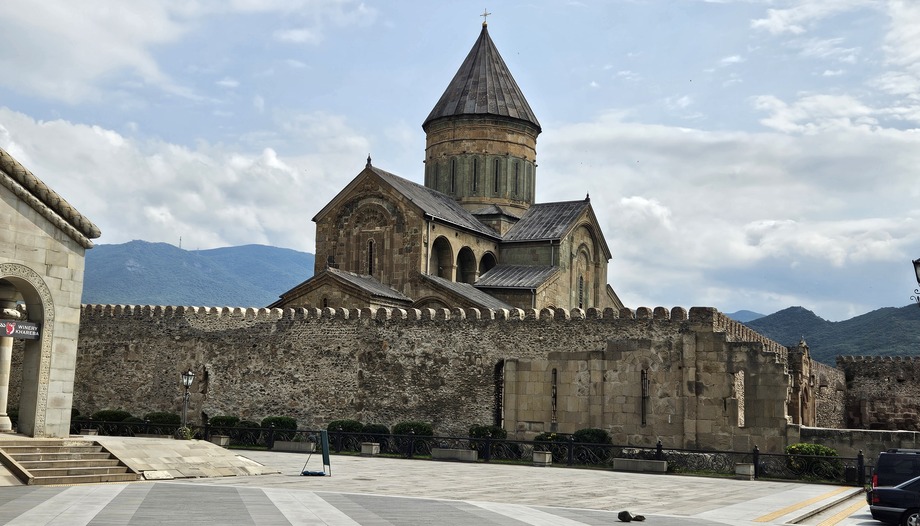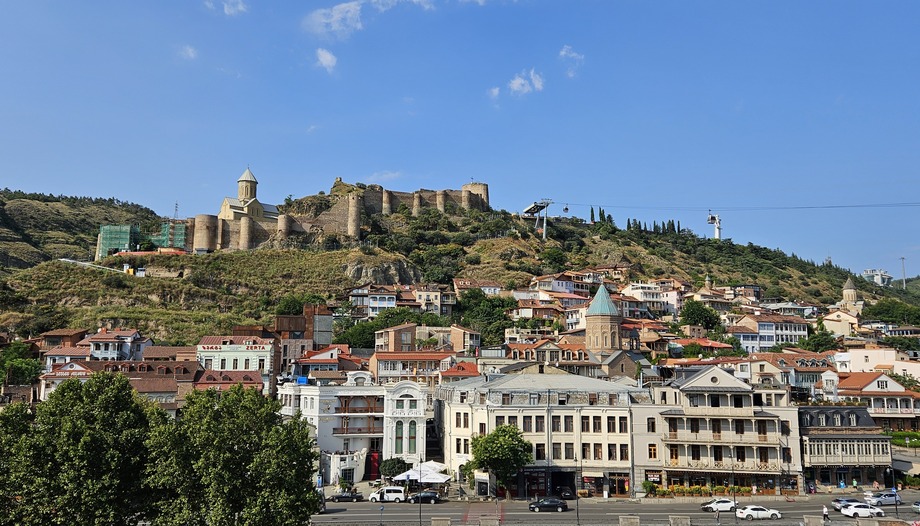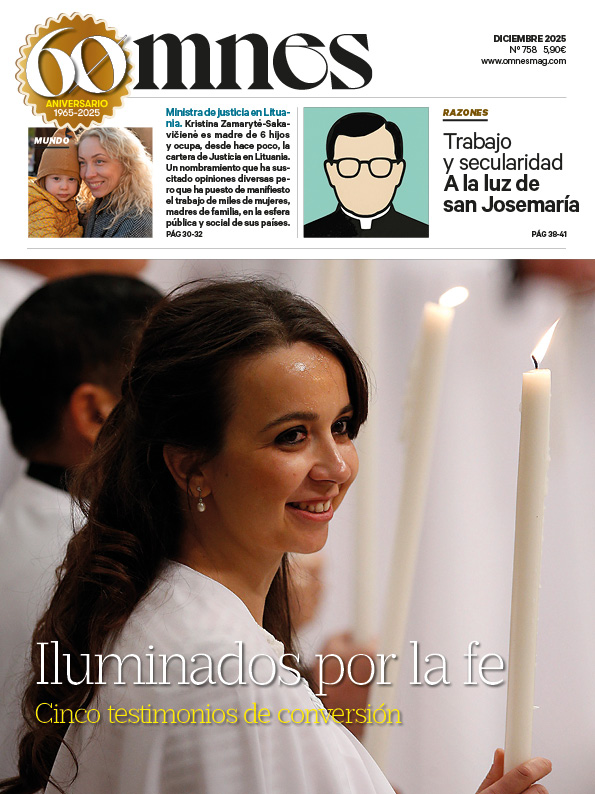Georgia, like other Caucasus countries, is a mosaic of different cultural, ethnic and linguistic traditions. Its strategic location, straddling Europe and Asia, has been essential for the creation of a complex society, the result of the encounter, and clash, between peoples, empires and religions.
The Georgians
The Georgian ethnicity itself represents about 83-86 % of the population, but does not form a uniform bloc. Georgians are divided into several regional subgroups, such as the Kartveli, Mingreli, Svani and Lazi, each with distinct linguistic and cultural characteristics.
However, they all speak Southern Caucasian languages (Standard Georgian is the dominant literary language and the other languages are closely related to it).
The main group, the Kartveli (the name of Georgia, in the local language, is Sakartvelo, i.e., "Country of the Kartveli"), originates from the central and eastern regions and speaks standard Georgian (although with various accents and dialects, at least 17), the official language of the country.
Then there are the Mingrelians, who live mainly in the western Samegrelo region and speak Mingrelian, a language of the same family as Georgian but not mutually intelligible. The Svani people populate the mountains of Svanetia, in the northwest of the country. They speak Svano, another South Caucasian language, and are known for their cultural and geographical isolation.
Finally, the Lazi (or Laz) are a small ethnic group inhabiting the Adjara region near the Turkish border. They speak Laz, a language similar to Mingrelian, and are mostly Muslim.
As South Caucasian languages, Georgian and its cognates are not related to other languages, being isolated languages. The alphabet used for these idioms is also unique. In fact, as mentioned in a previous article, three writing systems have been used over the centuries to write the Georgian language: mkhedruli, once the royal alphabet, and the one used today, which has 33 characters (out of the original 38), asomtavruli and nuskhuri, the latter two used only by the Georgian Church, in the texts of religious ceremonies and in iconography.
Ethnic minorities
Among the ethnic minorities living in Georgia there are ArmeniansAzeris, Russians, Ossetians, Abkhazians, Greeks and Kurds.

Armenians constitute, together with Azeris, the largest minority in the country. They are especially concentrated in the Samtskhe-Javakheti region, where in some cities, including the capital, Akhaltsikhe, they represent more than 90 % of the inhabitants.
Until a few years ago, it was very common for the Armenian population not to be able to speak Georgian (as public education in their region provided a limited number of hours of instruction in the country's official language). Lately, especially since the time of Mikheil Saakashvili, the situation has been changing and the Armenian community is becoming better integrated in Georgia, although it has a long historical presence and its own linguistic and religious identity.
Azerbaijanis live mainly in the Kvemo-Kartli region, on the border with Azerbaijan. Predominantly Muslim, they speak a Turkic language, Azerbaijani. Russians, on the other hand, are a small but always influential minority, especially during the Soviet period, to the extent that their language is still widely understood and spoken, especially among the older generations.
Abkhazia and South Ossetia: Open wounds
The Ossetians are an Iranian-speaking (Indo-European) population with a predominantly Orthodox Christian religion. They live in South Ossetia (with capital at Tskhinvali), a separatist region in northern Georgia, and in the Russian republic of North Ossetia-Alania. They descend from the Alans and Sarmatians, tribes from Central Asia, and converted to Christianity during the Middle Ages, under Georgian influence.
The Mongol invasions caused the expulsion of the Ossetians from their homeland (today in Russian territory) and their deportation to the Caucasus, where they formed three distinct political units: Digor, in the west; Tualläg, in the south (today's South Ossetia, in Georgia); Iron (today's North Ossetia-Alania).
Historically, South Ossetia has always been part of Georgia, but the local population, mostly ethnic Ossetians, was culturally and linguistically related to the North Ossetians. However, even during the Soviet period, South Ossetia remained part of Georgia, in this case of the Georgian Soviet Socialist Republic, albeit enjoying a particular autonomy.
With the dissolution of the Soviet Union in the early 1990s, the newly independent Georgia adopted a policy of strengthening sovereignty and national identity throughout the territory, which caused unrest among ethnic minorities. Thus, in 1991, South Ossetia declared its independence, triggering a civil war, the First Russo-Georgian War, with a series of ethnic violence and massacres and a mass migration that saw many Ossetians fleeing to Russia, on the one hand, and thousands of Georgians leaving the region for good, on the other.
The war ended with a fragile cease-fire in 1992, mediated by Russia, which maintained peacekeeping troops (coincidentally, like those Russia maintained in Artsakh/Nagorno-Karabakh or elsewhere) in the region. However, South Ossetian independence was never recognized by the international community.
The Second South Ossetia War, also known as the Five-Day War, the August War or the Russo-Georgian War, broke out in 2008, also involving Abkhazia, after a period of tensions between the Saakashvili government and Putin's government, which strongly opposed the Georgian prime minister for his policy of rapprochement with the West and his attempts to regain control over the separatist regions.
Faced with the upsurge of violence in the region, Russia then decided to intervene under the pretext of protecting its citizens in South Ossetia and Abkhazia (many Ossetians and Abkhazians had Russian citizenship), something similar to what happened with the annexation of Crimea in 2014 and the invasion of Ukraine in 2022.
The Russian intervention put an end to the conflict in just five days and marked the formal recognition by Russia of the independence of South Ossetia and Abkhazia. Here, among other things, the previous conflict in the 1990s had led to a real ethnic cleansing of the Georgian component, which was then the majority in the region (in 1989, Abkhazians, a North Caucasian-speaking people of predominantly Orthodox Christian religion, numbered about 93,000, 18 % of the population, while Georgians numbered 240,000, 45 %. As of 1993, Abkhazians came to represent about 45 % of the population).
In 2021, the European Court of Human Rights accused Russia of human rights violations in the separatist regions of Abkhazia and South Ossetia.
Christianity in Georgia
The beauty of the Georgian churches and monasteries is overwhelming, with the enveloping aroma of incense from the entrance, the sound of polyphonic chants (Georgian polyphony, not only liturgical but also popular, fascinated the Russian composer Igor Stravinsky, is now protected by Unesco and NASA has even sent a recording of it into space), icons and frescoes, typical of the local ecclesiastical architecture. Medieval churches, such as those in Mtskheta and Gelati, testify to the country's ancient architectural and spiritual tradition.
In fact, the culture of Georgians is deeply rooted in Christian traditions, and the local autocephalous Orthodox Church plays a crucial role in the life of the country.
In pre-Christian Georgia, which was very diverse in terms of religious cults, local pagan beliefs coexisted with Hellenistic cults (especially in Colchis), the cult of Mithras and Zoroastrianism. It is in this context that, according to tradition, Christianity was first preached by the apostles Simon and Andrew in the 1st century, later becoming the state religion of the Kingdom of Iberia (Kartli) in 337 (the second state in the world after Armenia to adopt Christianity as its official religion), by a Greek woman (according to one tradition, related to St. George), the much venerated Saint Nino (Christian) of Cappadocia, whose effigy can be found everywhere.
The Georgian Orthodox Church, initially part of the Church of Antioch, obtained autocephaly and gradually developed its own doctrinal specificity between the 5th and 10th centuries. The Bible was also translated into Georgian in the 5th century, with the local alphabet created and developed for this purpose (although some recent studies have identified a probable much older, pre-Christian alphabet). As elsewhere, the Church was instrumental in the development of a written language, and most of the earliest written works in Georgian were religious texts.
The adoption of Christianity placed Georgia on the front line between the Islamic and Christian worlds, but Georgians remained stubbornly attached to Christianity, despite repeated invasions by Muslim powers and long episodes of foreign domination.
After annexation to the Russian Empire, the Russian Orthodox Church took control of the Georgian Orthodox Church from 1811 to 1917, and subsequent Soviet rule resulted in harsh purges and systematic repression of religious freedom. In Georgia, too, many churches were destroyed or converted into secular buildings. Once again, the Georgian people were able to react, incorporating religious identity into the strong nationalist movement.
In 1988, Moscow finally allowed the Georgian Patriarch (katholikos) to start consecrating and reopening and restoring closed churches. After independence in 1991, the Georgian Orthodox Church finally regained autonomy and full independence from the state.
Religious freedom
According to the Georgian Constitution, religious institutions are separate from the government and every citizen has the right to freely profess his or her faith. However, more than 83 % of the population adheres to the Orthodox Christian confession, with minorities of Russian Orthodox (2 %), Armenian Apostolic Christians (3.9 %), Muslims (9.9 % mainly among Azeris, but also Laz), Roman Catholics (0,8 %) and Jews (the Georgian Jewish community is of very ancient tradition and considerable importance, although its size was drastically reduced during the 20th century due to massive emigration to Israel, where today several famous Israeli Jews in show business and culture are of Georgian origin, such as the singer Sarit Haddad).
I greeted this beautiful country from the peaks of the Caucasus, first in the coolness, at over 3,000 meters, near the border with the Russian Federation and the splendid Holy Trinity Monastery of Gergeti, and then in the heat of the sulfurous bath, with water at about 50 degrees, in an ancient structure in Tbilisi. But I promised myself that I would return and return soon.








